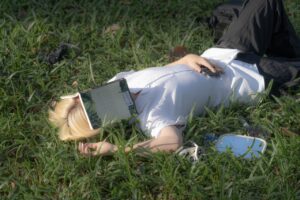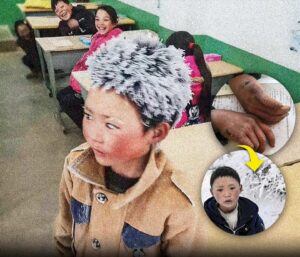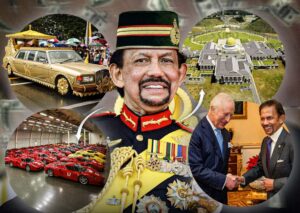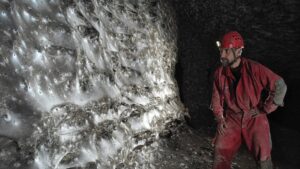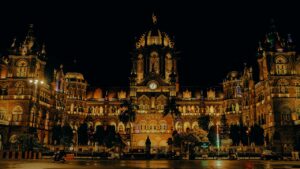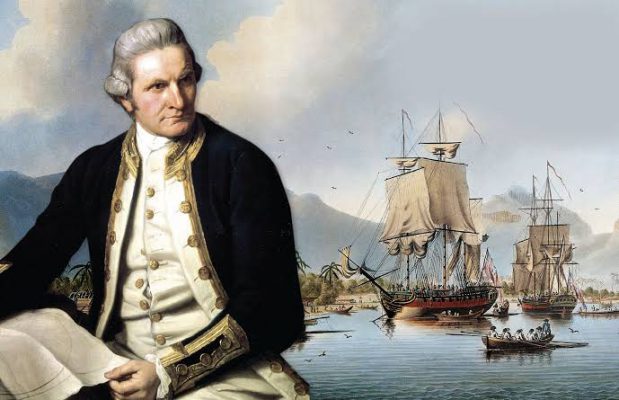 Pin
Pin With the wind from the wild Yorkshire moorland whipping against his back, a young man stood on the cliffs above the bustling fishing village of Whitby, and gazed down on the scene below.
The tiny harbour was crowded with sturdy, square rigged sailing ships —‘Whitby cats’ as they were known in nautical circles. It was one of these rugged vessels that James Cook was later to circumnavigate the world, discovering Australia and New Zealand on the way.
But that was not all. More than anyone else, James Cook opened up the Pacific Ocean, that enormous mass of water which covers almost a third of the globe. Single-handedly, he redrew the map of the world west of the Americas, going where no man had ventured before. He revolutionised our knowledge of the planet we live on.
In a way, it was miraculous that James Cook rose to captain the voyages of discovery that made him famous. Unlike many of the world’s great explorers, Cook did not come out of society’s top drawer. Those other famous explorers, like Magellan, Da Gama, Tasman, and Bougainville were all able to operate from a position of rank in order to obtain financial backing for their schemes.
Cook, however, was the son of a farm worker. He was born, the eighth of nine children in a tiny cottage in the Yorkshire village of Morton-cum-Cleveland on October 27, 1728.
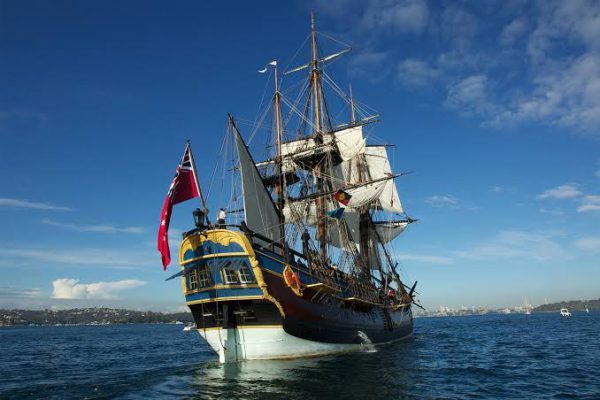 Pin
Pin This model of the Endeavour shows the sturdy lines of the hull and the rigging, simple by the standards of the period, which Cook choose when she was refitted for the voyage.
He was educated at a ‘dame’ school — where the standards of education were higher than other establishments and it is said that he never made a mistake at his maths. In later years, this numerical ability was to stand him in good stead; whether he was lost in the midst of a trackless ocean or drifting helplessly in the Antarctic pack ice James Cook’s ability to navigate never let him down.
But at the time, the young man did not know which way his career would lead him, and his father,’ mindful of his security, apprenticed him to a local haberdasher. Young James soon became restless, however: in July, 1746, aged almost eighteen, he transferred his apprenticeship to a Whitby coal skipper named James Walker.
Walker’s business was running coal to London in ‘Whitby cats’. It was in these small collier craft that James Cook was to learn the principles of seamanship.
He could not have asked for a better school in which to learn his trade. Along the east coast of England lie some of the most dangerous waters in the world. Swirling currents, shifting currents and submerged rocks made the regular voyage down to London extremely dangerous for the fragile wooden craft of the time. A captain who could ply his trade in those treacherous waters could feel confident virtually anywhere.
By the age of 27, Cook was a good enough seaman to be offered the command of his own collier. But Cook was ambitious. He knew that if he accepted the offer, his prospects in the colliery trade could not extend much further. In 1755, therefore, he enlisted in the Royal Navy as a seaman.
There, his ability was soon recognised, and promotion came quickly. From master’s mate on the Eagle, a ship of 60 guns, he rose to position of master on the Pembroke, a ship of 64 guns.
Soon afterwards, he was sent to Canada to take part in the assault on Quebec, his job being to chart the St. Lawrence River prior to the attack. During those years, Cook provided the Admiralty with charts of an accuracy and clarity never seen before. When he returned to England in 1762, he found himself an acknowledged master of pilotage.
So it was in 1767, when the Royal Astronomical Society proposed a visit to the Pacific island of Tahiti in order to observe the transit of Venus through the southern sky, James Cook was the man they wanted to take them there.
There was, however, another reason for choosing Cook — and one which even Cook himself did not know until he opened his sealed orders on reaching Tahiti.
Below: A few things Cooks brought back from his voyage of exploration to show Britain how very different life was in the South Seas to anything they had-ever encountered before.
 Pin
Pin 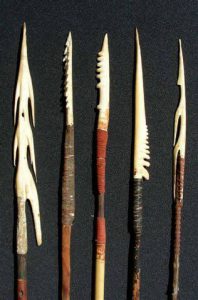 Pin
Pin  Pin
Pin 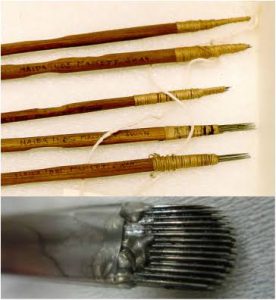 Pin
Pin 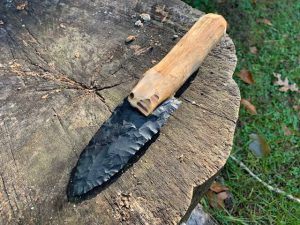 Pin
Pin 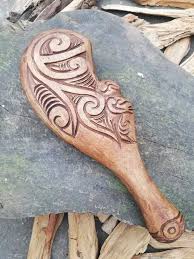 Pin
Pin 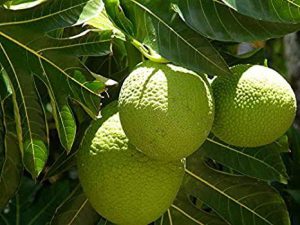 Pin
Pin  Pin
Pin For centuries, geographers had speculated on the existence of an enormous southern continent. They called it Terra Australis Incognita —the ‘unknown southern land’ — and estimates of its size varied widely. Some people thought it began off the coast of New Guinea, near the part of Australia which Abel Tasman had bumped into and possibly extended as far south as South America.
But whatever the size of the southern continent, the British Government realised the enormous potential wealth that could be gained from discovering it and claiming it for Britain. When Cook opened his orders in his cabin off Tahiti, he found that he was to sail south, claiming all land that he found in the name of His Britannic. Majesty, King George III.
So began Cook’s first voyage. It was to ensure his eternal fame, and put his name in the textbooks as the man who first charted Australia and New Zealand.
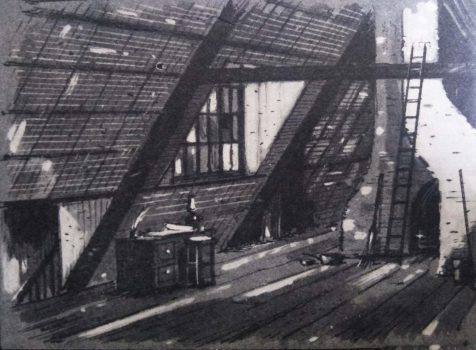 Pin
Pin Entering the Pacific round Cape Horn (the tip of South America), Cook’s little collier, converted and renamed Endeavour, weighed anchor in Tahiti in September, 1769, almost a year after leaving England. Once the astronomical observations were completed, he set sail for the mysterious southern continent.
After journeying for 2,500 km through bad weather and banks of seaweed, he had found nothing. Turning west, he headed towards New Zealand, the coast of which had been glimpsed by the Dutch explorer Abel Tasman about 120 years previously.
At first, they were prevented from landing by hostile Maori natives; but eventually Endeavour beached in what is now called Cook’s Bay. Later still, Cook landed in Queen Charlotte’s Sound and climbed a hill. From his vantage point, he was able to see that New Zealand was surrounded by sea, and not, as Tasman thought, the tip of a southern continent.
Over the next three months, Cook sailed in and around the two islands that make up New Zealand, drawing up wonderfully accurate charts and maps. Then he set off westwards, sighting Australia on April 18, 1770.
 Pin
Pin A month later he landed in Botany Bay. Continuing up the east coast of Australia, and somehow surviving the 1,500 km wall of coral called the Great Barrier Reef, Cook claimed everything in the name of King George III. He mapped the coastline brilliantly, calling the new territory – New South Wales. Then he set off home.
He did not stay long, however. A year later, Cook again set sail for the Pacific in two ships, the Resolution and Adventure. This time he intended to disprove once and for all the existence of an enormous southern continent.
To this end, Cook decided to sail completely around the world, going as far south as he dared, up to — and sometimes into — the pack ice of the Antarctic. Having circumnavigated the globe as far south as possible, he had proved conclusively that there was nothing to the south of Australia and the Americas.
Taking time off to perform an astonishing sweep back through the Pacific, Cook discovered a whole series of idyllic islands where the natives wore flowers in their hair and welcomed the explorers as gods.
To the ship’s crew, it seemed like Paradise but Cook was careful to respect the natives’ customs and way of life. On one occasion, for example, Cook found his quarter deck crowded with grinning Maoris. They had brought him a particularly grisly gift — the head of a Maori.
“The sight of the head… struck me with horror and filled my mind with indignation against these Cannibals, but when I considered that any resentment I could shew would avail me but little and being desirous of an eye witness to a fact which many people had their doubts about, I concealed my indignation and ordered a piece of the flesh to be boiled and brought on the quarter deck where one of the Cannibals ate with such relish before the whole ship’s company which had such effect on some of them as to cause them to vomit.”
By July 1775, Cook was back home. But once again he did not stay long. The call of the sea and the lure of unexplored oceans led him to go in search of that other myth beloved of sailors — the North-west Passage, a strait thought to dissect the Arctic north of America.
On July 13, 1776, Cook put to sea in his old flagship, the Resolution.
After two years of searching for the passage, he came to the conclusion that it did not exist, or if it did, to be so packed with ice as to be of little value. Sailing back into the warmer waters of the Pacific, they decided to spend the winter in Hawaii.
The islanders treated the British as old friends, heaping them with flowers and staging lavish banquets in their honour. But then tragedy struck.
On February 14, 1779, Cook went ashore at Kealakukua Beach to sort out a misunderstanding which had arisen between the natives and his men. Tempers flared, and in a scuffle on the beach Cook was repeatedly stabbed and clubbed to death. Only by long and patient negotiations were his officers able to obtain his bones, which they buried at sea.
So perished one of the greatest explorers the world has ever known — a man whose spirit was best summed up in the names of his ships; Endeavour, Resolution, Adventure and Discovery.
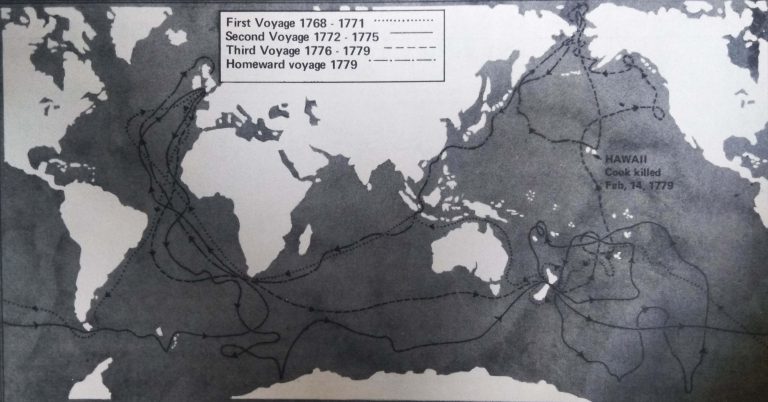 Pin
Pin Exploration of New Zealand
New Zealand is believed to have been discovered by Polynesians, specifically the Maori people, who arrived around the 13th century. European exploration of New Zealand began in the 17th century, with Dutch explorer Abel Tasman visiting in 1642.
Australia, on the other hand, was first discovered by Dutch explorers. The western coast of Australia was explored by Dutch navigator Willem Janszoon in 1606, and a few years later, in 1616, another Dutch navigator Dirk Hartog landed on what is now known as Dirk Hartog Island. However, European settlement and colonization of Australia did not occur until much later, with the arrival of the First Fleet from Britain in 1788.
There are several historical pieces of evidence that support the claim that New Zealand was discovered before Australia. While it is challenging to determine an exact date and establish an undisputed timeline, the following evidence points towards New Zealand being discovered earlier:
It is worth noting that exploration and discovery of new lands are complex processes, often involving multiple encounters by different groups over time. Therefore, while there is evidence to support New Zealand being discovered before Australia, it is essential to recognize the limitations and ongoing debates surrounding historical evidence.
The earliest evidence of human occupation in New Zealand and Australia :
1. New Zealand: The exact timing of human arrival in New Zealand, commonly referred to as Aotearoa by the indigenous Māori people, is still a topic of debate among scientists. However, archaeological evidence suggests that the first Polynesian settlers known as the Māori arrived around the 13th century AD. The earliest confirmed archaeological site found in New Zealand is the Wairau Bar on the northeastern South Island, dating back to the 13th century. It provides evidence of early Māori occupation.
2. Australia: The earliest evidence of human occupation in Australia dates back at least 65,000 years ago. It was discovered at the Madjedbebe rock shelter in Arnhem Land, Northern Territory. This site contains an array of stone tools, ochre pigments, and remains of food sources, providing insights into the lives of Aboriginal people who lived there. It is believed that the ancestors of present-day Indigenous Australians arrived on the continent through multiple waves of migration over tens of thousands of years.
The discovery of New Zealand and Australia by Europeans played a fundamental role in the colonization and development of these countries. Here are some key contributions:
The European discovery of New Zealand and Australia initiated a process of colonization that profoundly influenced the social, economic, political, and cultural development of these countries. The impacts of this colonization are still evident today and continue to shape the identities of both nations.
Some of the major natural resources that have contributed to the economic growth of New Zealand and Australia are:
These natural resources have played significant roles in the economic development of both New Zealand and Australia, generating export opportunities, creating jobs, and attracting investments.
In both New Zealand and Australia, the extraction and utilization of natural resources have raised several environmental and ecological concerns :
Efforts are being made in both countries to address these concerns through stricter regulations, sustainable resource management practices, and increased conservation efforts. However, balancing economic growth and environmental protection remains a challenge.
Frequently Asked Questions : New Zealand and Australia discovery
New Zealand was discovered by Polynesians around the 13th century. These early settlers traveled by canoes from islands in the Pacific Ocean and established the nation’s indigenous Māori culture. The first European to reach New Zealand was the Dutch explorer Abel Tasman, who arrived in 1642 during his exploration of the South Pacific. However, it wasn’t until British explorer James Cook’s voyages in the late 18th century that detailed mapping and exploration of New Zealand began.
Australia was discovered by European explorers during the 17th century. The Dutch were the first to make significant sightings of the Australian continent. In 1606, Dutch navigator Willem Janszoon landed on the western coast of Cape York Peninsula in what is now Queensland. A few years later, in 1616, another Dutch sailor named Dirk Hartog landed on an island off the Western Australian coast. The British explorer James Cook also played a major role in the discovery of Australia during his first voyage in 1770, when he charted and claimed the eastern coastline for the British Crown.
The European discovery of New Zealand led to significant changes in the country’s social, political, and economic landscape. Initially, European traders and explorers had limited contact with the Māori population, but over time, increasing numbers of settlers and missionaries arrived. This led to conflicts over land ownership, as European settlers sought to establish agricultural settlements and cities. The signing of the Treaty of Waitangi in 1840 established British sovereignty over New Zealand, but also guaranteed the rights of Māori as British subjects, thus shaping New Zealand’s unique cultural and legal framework.
The discovery of Australia by Europeans had a profound impact on the continent’s history. British colonization began in 1788 with the establishment of a penal colony in New South Wales, primarily to alleviate overcrowded British prisons. This marked the beginning of European settlement in Australia. Over the following decades, more British immigrants arrived, leading to the displacement and marginalization of the indigenous Aboriginal and Torres Strait Islander peoples. Australia would eventually become a dominion of the British Empire, established as a federation in 1901 with its own government and constitution.
The discovery of New Zealand and Australia opened up new possibilities for trade and exploration. European powers sought to exploit the rich natural resources and establish colonies, leading to increased maritime trade routes across the Pacific Ocean. New Zealand became an important hub for seal hunting and whaling in the 18th and 19th centuries. For Australia, the discovery of gold in the 1850s sparked a gold rush that resulted in a massive wave of immigration and the rapid growth of its economy. Additionally, both countries played significant roles in global exploration and scientific research, with New Zealand being a base for Antarctic exploration and Australia hosting various international scientific expeditions.
The discovery of New Zealand and Australia by Europeans had long-lasting effects on the indigenous populations, culture, and societies of both countries. In New Zealand, the Treaty of Waitangi continues to be an important legal document, impacting land rights, political relationships, and cultural preservation efforts. Australia, on the other hand, grapples with the ongoing reconciliation process between its non-indigenous and indigenous populations. The histories of colonization, displacement, and the legacy of policies such as the Stolen Generations continue to shape social and political discussions in both countries. Additionally, the discovery of these nations and subsequent immigration have contributed to their diverse multicultural societies.












